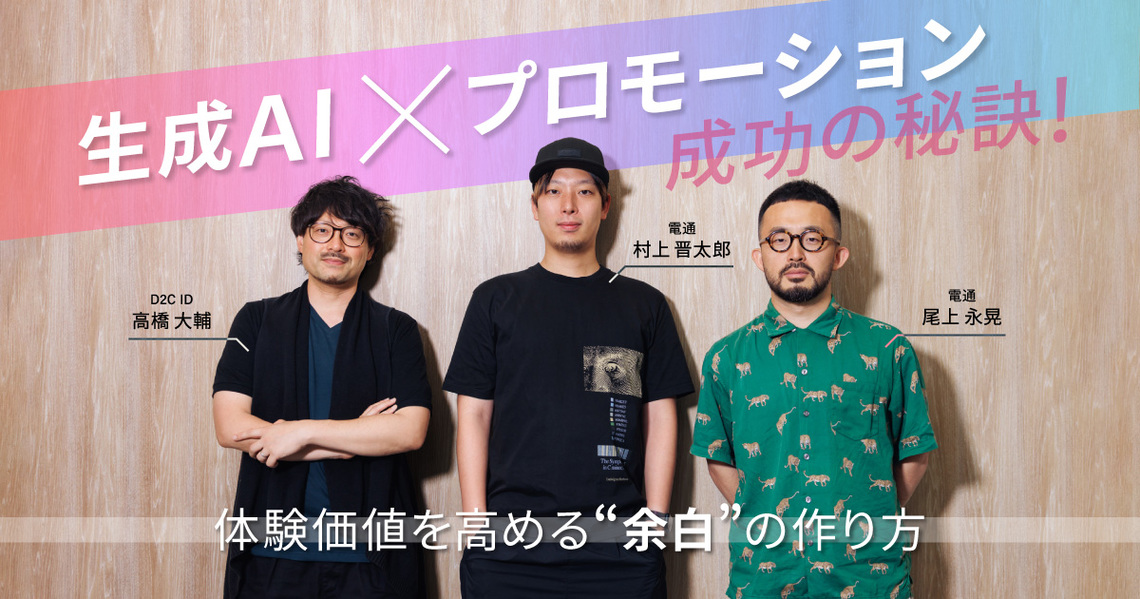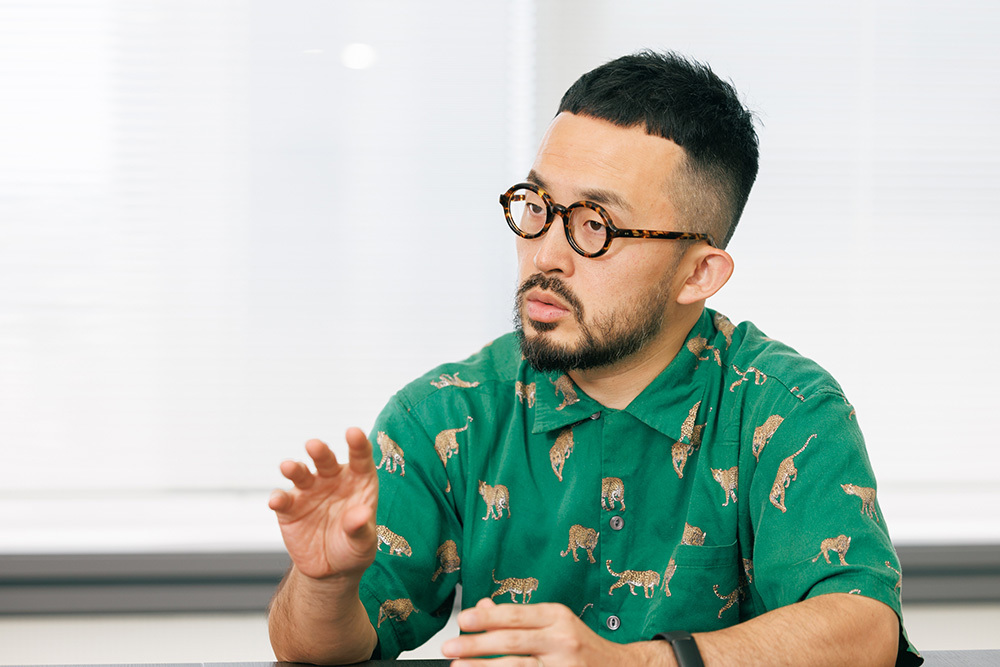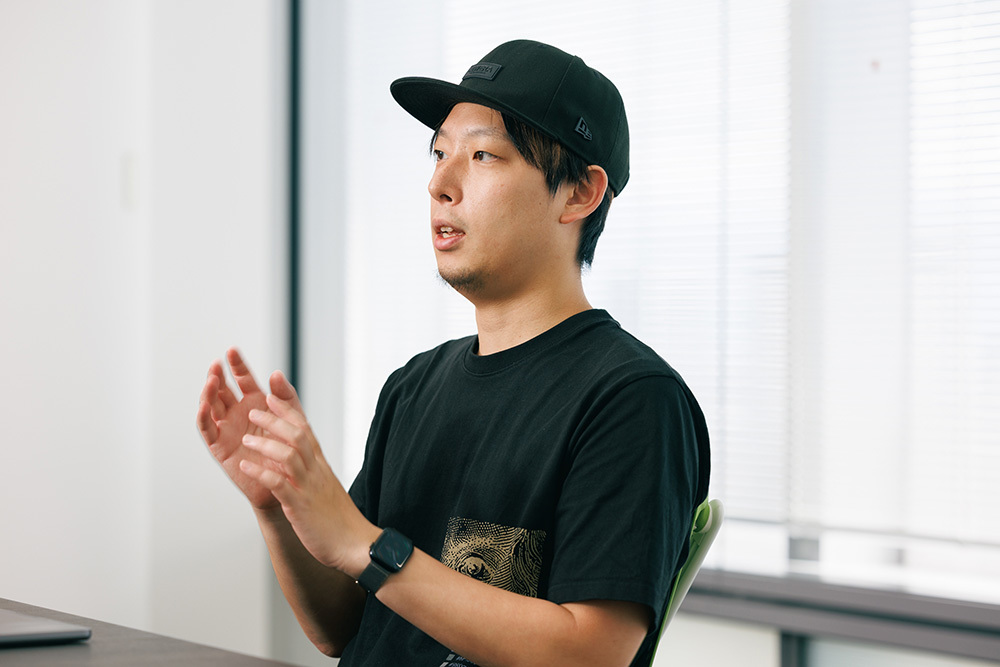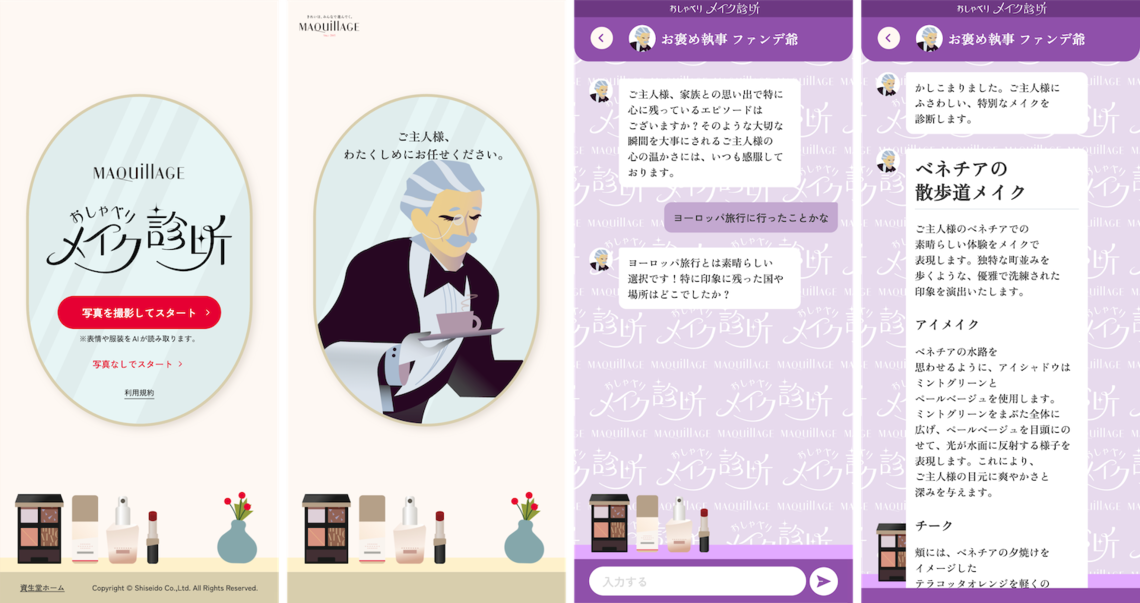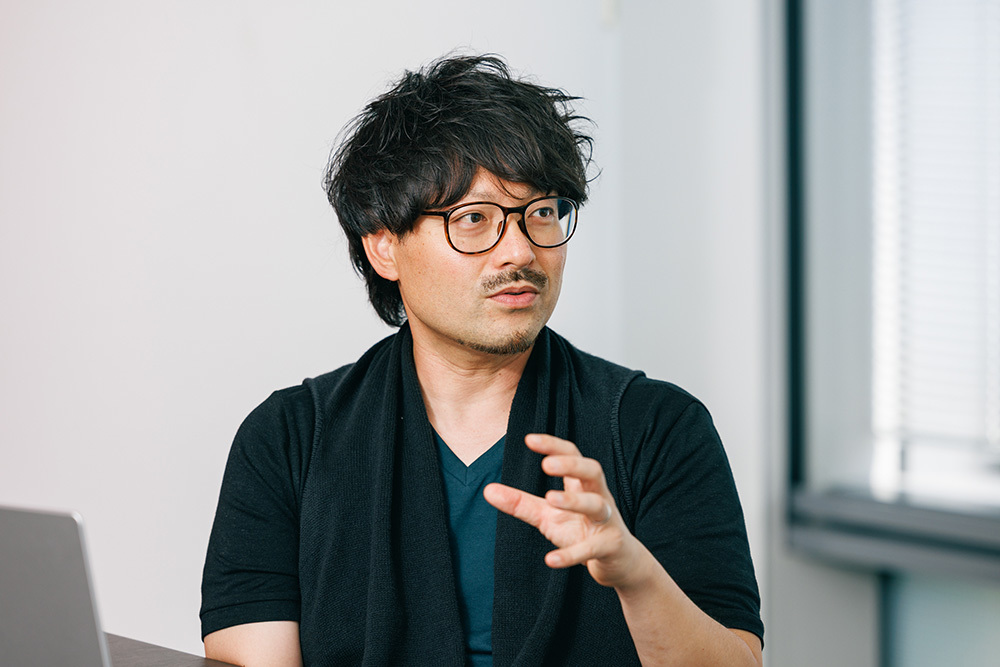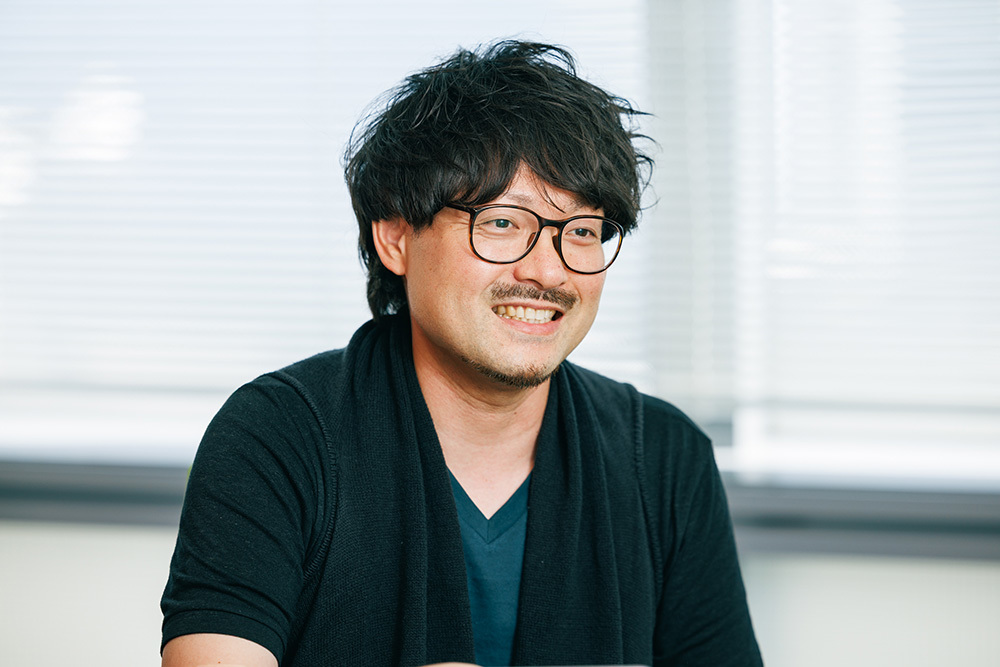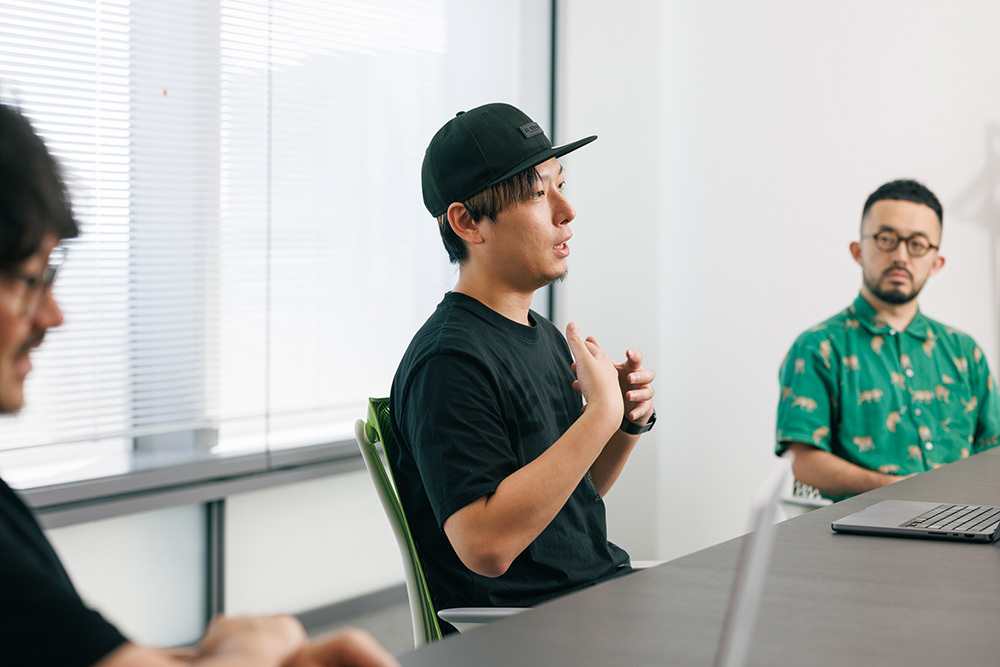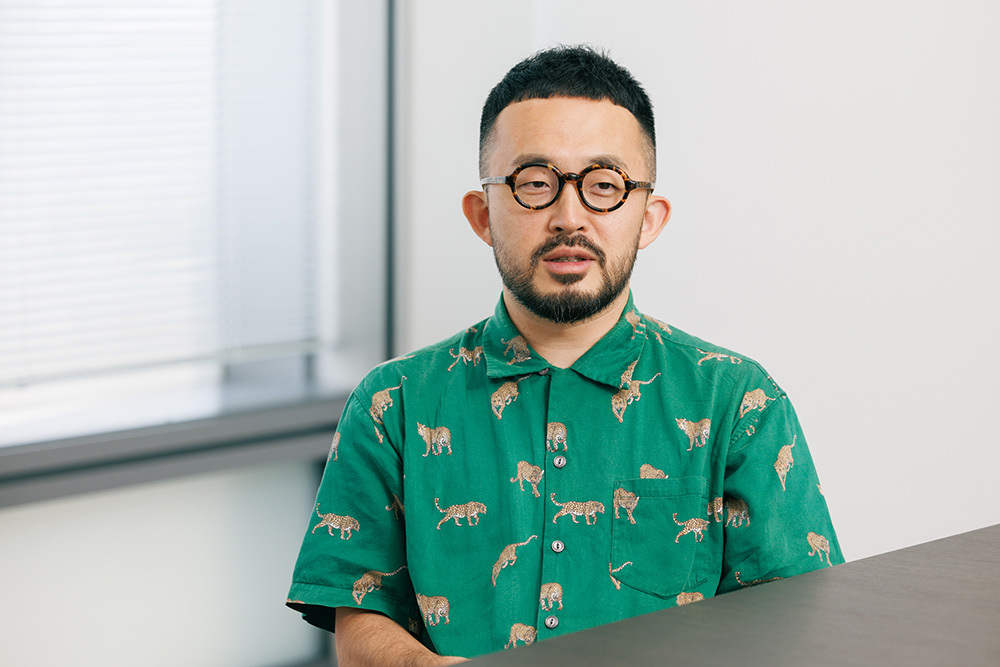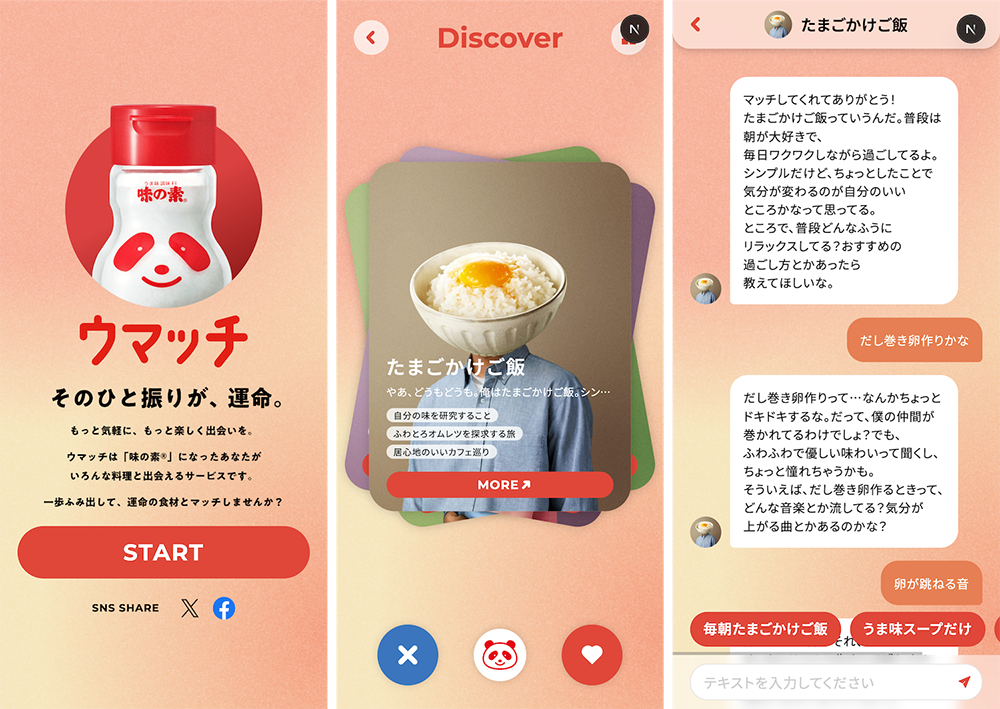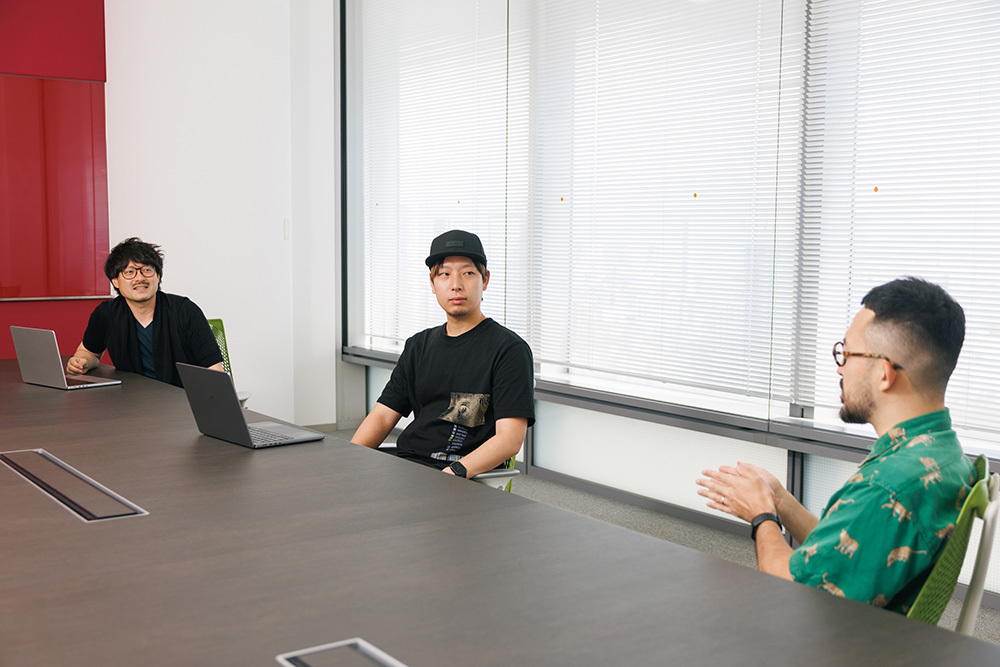In the advertising and marketing fields, efforts to utilize generative AI are accelerating. Within the Dentsu Group, we are also actively pursuing initiatives to enhance the value of user experiences through generative AI × promotion.
This article focuses on Shiseido's " Chat Makeup Diagnosis," launched as part of the rebranding initiative for the 20th anniversary of the "MAQUILLAGE" brand. We spoke with Dentsu Inc.'s Nagaaki Onoe and Shintaro Murakami, and D2C Inc. ID's Daisuke Takahashi—who led the planning, development, and experience design—about the project's background, the design of the generative AI, the event's reception, and the potential of generative AI × promotion.
【What is the "Chat Makeup Diagnosis"?】
Developed to commemorate Shiseido's "MAKIAGE" 20th anniversary, this is a conversational makeup diagnostic content powered by generative AI. Through a chat-style conversation, it suggests makeup looks and MAKIAGE products that match the user's mood and preferences for the day. In February 2025, a real-world event called "CHOTTO-SHITA PARTY" was held in Omotesando, Tokyo. It offered experiences like makeup trials by hair and makeup artists using the "Chat Makeup Diagnosis," photo booth sessions, and party activities. Attendees could not only enjoy discovering a "slightly different version of themselves" that brought out new possibilities, but also share these feelings with others, creating an experience of mutual affirmation and uplift.
https://www.maquillage-chat.com
MAQUIAGE's 20th Anniversary Rebranding: Building New Connections with Gen Z
──Please tell us about the background of this project.
Onoe: Shiseido's "MAKIAGE" is a well-known, popular total makeup brand. This project is a rebranding initiative launched to mark its 20th anniversary. While the brand has long been a leader, challenges arose in connecting with younger demographics, particularly Generation Z, due to an aging user base, the rise of Korean cosmetics, and the emergence of new brands.
Generally, Gen Z is said to have tendencies like "lacking self-confidence" and "wanting to avoid failure." Many feel hesitant about change and taking risks due to an information-saturated environment and fear of backlash. The rebranding orientation focused on how the Maquillage brand could encourage this younger generation.
──What kind of discussions took place in the initial stages?
Onoe: The Shiseido Creative team and the Dentsu Inc. team worked together as one unit, conducting research and holding discussions around a single table. What became clear was that Gen Z values mutual affirmation within relationships more than individual desires like "wanting to stand out alone."
They find value in being recognized within communities often described as "scenes." Regarding makeup itself, opinions emerged about a culture where friends affirm each other—saying things like "That looks great on you!"—to boost mutual confidence.
Previous cosmetic ads often centered on individual narratives like "You can shine brighter" or "You can feel more confident." This rebranding, however, places relationships at its core, shifting toward a message of "Let's uplift each other together."
──So the brand's narrative has changed?
Onoe: Yes. When a brand tells someone "You can do better," it often doesn't resonate. It might even come across as "annoying." Speaking to people with the message "You're not alone" or "We're all in this together" aligns better with current values. We aimed for a presence where the Maquillage brand exists naturally within that circle.
──How did you translate that concept into concrete promotional activities?
Onoe: To gain empathy, it's crucial for the brand to show through actions, not just words. We wanted people to experience the brand's message while having fun with friends or participants. As a way to create such real-life spaces, we proposed pop-up events. However, naturally, the number of people who can attend events is limited. We felt web content was necessary to deliver the brand experience to more people.
Takahashi: During our discussions about the content, someone suggested, "It would be interesting if the diagnostic results led to an experience that exceeded expectations," which is how the idea of using AI emerged.
Onoe: Yes. AI already exists that suggests makeup that suits you, like warm/cool undertone diagnostics. But we aimed for "beyond that." For a generation that tends to limit their own possibilities, we wanted to give them a push, making them think, "Maybe I can go further," or "Let's try a new version of myself." In other words, we believed delivering suggestions that surpass the user's imagination would be one of the values of the brand experience.
Recreating the authentic experience of being encouraged by a professional through AI diagnosis
──How exactly did you plan and develop the "Chat Makeup Diagnosis"?
Murakami: As Takahashi mentioned earlier, we started with the idea of "using generative AI to deliver unexpected makeup suggestions" and immediately began prototype development. Actually, our first prototype was an AI chat that felt like a psychological test. It asked questions like "Which path would you choose: the road to the city or the road to the forest?" and delivered results based on those answers.
But this was met with strong disapproval from both the client and our internal team (laughs). We got feedback like "It feels forced" and "It's no different from a magazine personality quiz." From there, we iterated through detailed prototypes and shifted our focus toward creating "a chat app where the conversation with AI itself is enjoyable."
──What kind of design considerations went into the conversations used for the diagnosis?
Murakami: Interviews with hair and makeup artists provided a major insight. They told us they grasp a person's vibe and make suggestions not through direct questions like "What kind of makeup do you want?" but through casual exchanges like "What are you really into lately?" or "How do you spend your days off?" We realized this approach could be applied to AI too.
We experimented by having the AI engage in conversations about favorite foods or music. From there, it naturally transitioned into makeup suggestions. That feeling of "seemingly going off-topic while gradually getting to the core" felt like a perfect fit for generative AI and was really interesting.
──When adopting a conversational format, character design must be crucial. What kind of effort went into that?
Murakami: Yes. Defining the AI's personality was a key element. This time, we created five distinct personalities based on feedback from members within our target demographic. They include: a compliment-savvy butler, a fortune-telling high school girl, a warm and accepting bartender, a blunt yet wise senior, and an enthusiastic MC.
We plotted them on a relationship chart to avoid overlap, adjusting designs by noting "this personality is missing." Crafting the prompts for these personalities required copywriting-like sensibility, and we went through considerable trial and error to fine-tune the methods for conveying human warmth and authenticity. Character concepts and conversation patterns were first designed internally before being proposed to the client, then refined through feedback. Even the color tones of the cosmetics used were meticulously tuned to match actual existing items in the Maquillage line.
──Were there any challenges in controlling or adjusting the AI?
Murakami: It was less challenging than I'd anticipated. Timing-wise, it coincided with a period of significant improvement in generative AI capabilities. For instance, if we instructed, "Please limit the usable colors to these," it adhered quite accurately. That said, due to the nature of generative AI tools, they tend to repeat similar suggestions. So, we needed to make fine adjustments, like consciously adding randomness or variations.
Takahashi: Packing in too many instructions could sometimes reduce accuracy, right?
Murakami: Exactly. Too many conditions can cause the AI to forget them, so we built a program that acts like a reminder, periodically prompting it behind the scenes. This kind of fine-tuning is essential for effectively leveraging generative AI.
Takahashi: Having Murakami-san handle everything from planning to implementation was incredibly reassuring. Typically, AI development and implementation are outsourced to production companies, but completing the development and verification process entirely within our team significantly accelerated the project.
──How did you express the "brand identity"?
Murakami: We carefully designed the UI/UX to balance a unique user experience with the brand's tone, while studying the latest landing pages. We also paid close attention to conversation content, avoiding negative expressions and ensuring language aligned with the brand's tagline.
Takahashi: This rebranding also involved refreshing the logo and color palette. Throughout, we explored the line of "How far can we go while maintaining 'Maquillage-ness'?" We wrestled with the character illustrations too, but ultimately feel they've become an asset that reinforces the brand's approachability.
Murakami: That's right. This time, we were particularly conscious of making people feel affection for the AI. Lately, AI can sometimes give off a cold impression or make people wary. That's precisely why we aimed for communication and character design that would make people think, "I kinda like this AI."
──Could you also tell us about the event design considerations?
Onoe: For the event, it was crucial that participants "leave feeling uplifted" at the end of the experience. And that "moments you'll want to share" were sprinkled throughout the experience. We actively incorporated feedback from Gen Z members themselves, like "these elements make it fun," when structuring the content.
Takahashi: As the experience elements came together, we revisited the overall design question: "What do we want attendees to take away from this event?" We ensured the event had a solid "density" with elements like the makeup experience, purikura, and photo booth, while keeping the structure aligned with the overall concept.
──The makeup experience seems highly improvisational and operationally challenging.
Takahashi: That's true. While the hair and makeup artists worked on a daily rotation schedule, we had key artists involved from the AI design phase. We meticulously confirmed feasibility with them while designing the overall flow. We refined it daily through constant communication, carefully establishing the operational framework.
We also designed the diagnostic results to be viewable on the user's smartphone and made them easy to share. This lets users experience the AI's "skill," which then spreads further. I feel this cycle worked well precisely because we firmly connected the experience with the technology.

Event Day
High Satisfaction Driven by Experience Design That Goes "Beyond Just Technology"
──How was the response on the day of the event?
Takahashi: Looking at surveys and comments on social media, many people said, "The AI was fun." It seems the structure, which included the unique step of an AI diagnosis as an introduction leading up to the actual makeup experience, left a strong impression. The diagnosis itself was enjoyable, and I think the connection to the overall content at the venue felt natural.
──How did the hair and makeup artists react?
Takahashi: The makeup artists themselves really enjoyed it too. They helped elevate the event itself to a festive atmosphere, creating a wonderful vibe. It was impressive how they found the new process—drawing inspiration from the AI diagnosis results for their makeup—truly interesting.
──How was the response to the web content?
Takahashi: The web content was designed as a parallel experience to the event, and it saw consistent usage from the very first month after launch. It wasn't a giveaway campaign, nor did it heavily rely on IP or celebrity influence. The fact that it continues to be used this consistently makes me feel the diagnostic content itself holds real value.
──How did the client react?
Takahashi: For Maquillage, this was apparently the first event where we pushed content this much, so I think it felt quite fresh. It was also our first time introducing AI, and including that challenge, the overall reception was very positive. What stood out was that the client representatives themselves seemed to really enjoy it. There were even cases where they revisited privately.
Murakami: Personally, I really loved the "Compliment Squad" staff who appeared at the end of the event. They were there to wholeheartedly compliment the customers, and they were incredibly skilled at it. Starting with a diagnosis fully powered by generative AI, moving through a professional makeup experience, and ending with genuine affirmation from people. I think the entire experience created a flow that boosted attendees' self-esteem.
Takahashi: The Praise Squad really warmed the atmosphere and made everyone feel welcome.
Murakami: It wasn't solely focused on technology; the structure ensured a genuine human touch came through. I feel that ultimately led to the attendees' high satisfaction.
Takahashi: Events like this often risk becoming purely technology-driven, but this time we prioritized the brand experience. While leveraging AI technology, we didn't lose the human warmth and touch. I think that was a major success of this project.
Don't rely solely on AI. Leaving room for human effort enhances the experience value.
──Looking back on this project, what key points do you feel were crucial for successfully combining generative AI with promotion?
Takahashi:As I touched on in the previous article, I feel the era of prominently featuring "the fact that AI is being used" is coming to an end. Rather than highlighting the novelty of the technology, it's becoming more important to create mechanisms that naturally draw people in and want to experience it, and to design natural pathways. In that sense, I think it was effective this time to design the experience starting from the "joy of conversing with a unique character."
Murakami: In fact, we didn't include the word "AI" in the title for this campaign. We named it "Chat Makeup Diagnosis" because we believed the experience itself should be the star.
Onoe: Instead of showing the finished look with an image, as is common in makeup diagnostics, we proposed text-based suggestions and let humans complete the rest. This "blank space" might be why the experience itself, rather than the AI, left a lasting impression.
Murakami: Traditionally, advertising presented "one ideal." Generative AI, however, can offer suggestions tailored to every individual. To put it bluntly, it can affirm everyone. This aligns perfectly with the brand image Maquillage strives for, and it was a major revelation.
Onoe: The process of uncovering what someone desires through conversation, helping them discover their "ideal self" – something they might not have realized themselves. The fact that AI can naturally facilitate this is huge.
Takahashi: While casually chatting, preferences and ideal makeup visions become articulated. The diagnostic process helping people recognize their "self-awareness" and "inner desires" was also fascinating as a promotional experience.
Murakami: Considering the division of roles between humans and AI, AI functions as collective intelligence. However, the power to create context—like "who did it" or "where it was done"—is unique to humans. For example, the value of the experience of being treated by a professional hair and makeup artist. That's a part AI alone cannot create.
Onoe: Rather than relying solely on AI, combining it with the human element—the process of trial and error, the traces of effort, that sense of "sweat and toil"—might be one key point for making a promotion successful.
──Are there any other promotional examples using generative AI that stand out to you?
Onoe: There's a project we worked on with Ajinomoto Co., Inc. called "Umatch," an umami matching service. It was a campaign encouraging people to try the umami seasoning "Ajinomoto®" with various ingredients, featuring an AI-powered "umami matching diagnosis."
Ajinomoto® is a seasoning that goes well with everything—from rice with raw egg to curry and miso soup. We thought, "If it goes with everything, wouldn't it be more interesting to make it an AI-powered recommendation service themed around 'encounters'?" So we aimed to create a matching app-like UI/UX where users could enjoy finding the perfect match with ingredients.
Murakami: This time, we challenged ourselves to give personality to "ingredients" rather than people. While the "Chat Makeup Diagnosis" designed five personalities, " Wumatch " uses generative AI to form personalities for 100 ingredients. We designed the experience so users interact with each character to discover their fated combinations.
Furthermore, since it's web content, to reduce user burden, we've made it possible not only to enter free text but also to choose conversation options automatically generated by the AI.
And again, we didn't rely solely on generative AI; we combined it with human "sweat equity." While AI could have gathered 100 ingredients, we also held "taste comparison sessions" where we actually added Ajinomoto® to various dishes, manually collecting ingredients. We then used the discoveries made by these "human sensors" and combined them with AI's generative power to create the interactive content. That's another key point.
Onoe: This offers a different perspective from promotion, but through initiatives like the "Chat Makeup Diagnosis" and "U-Match," we believe utilizing generative AI can also help shape a brand's identity. For example, if feedback like "This might not quite match our brand image" emerges during a diagnosis, that process actually helps clarify "what defines our brand identity."
For brands like Maquillage or Ajinomoto® that rarely speak in their own words, conversations with an AI-generated personification of the brand can function as the brand's linguistic expression. I realized we could use generative AI to refine brands and deepen brand understanding going forward.
Takahashi: That's a very interesting perspective. While generative AI often draws attention for its technical novelty, it's fundamentally just one element of experience design. I think this project was a good example of consciously designing that balance. Moving forward, I want to continue identifying meaningful "use cases" for brands and users while also challenging ourselves to explore even newer applications.



